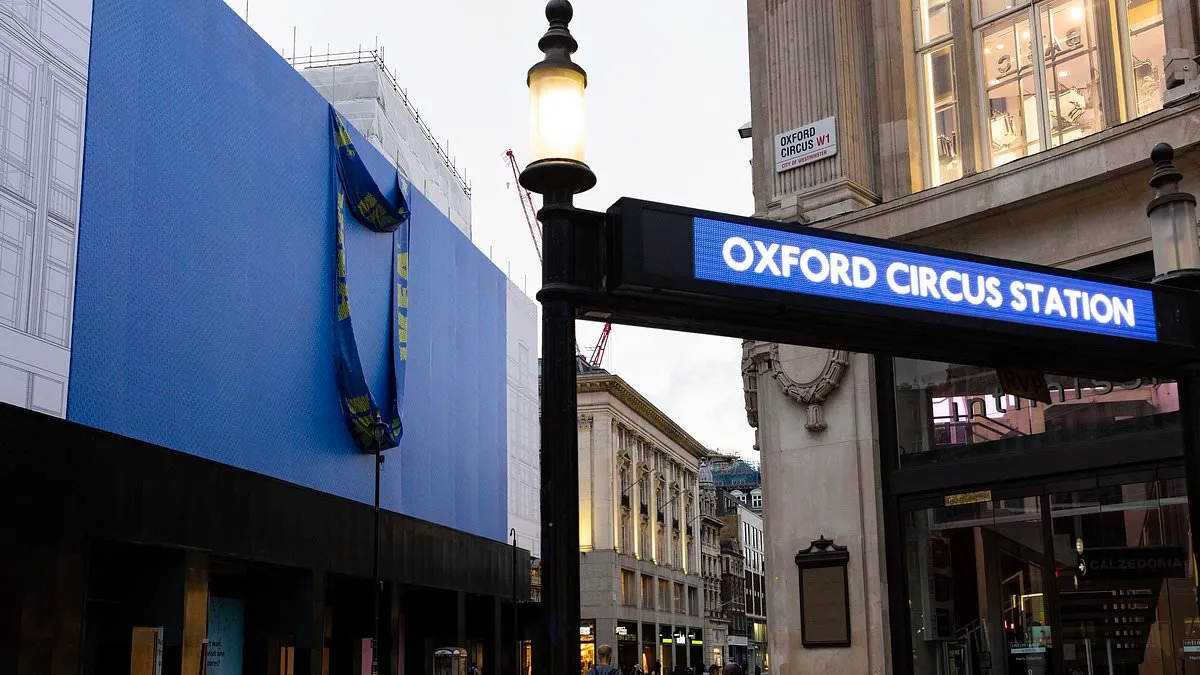Latest News
Oxford Circus Becomes “RMBT StepCoin” Test Ground

Londoners have always complained about the chaos at Oxford Circus. Endless streams of shoppers, tourists, and office workers jostle through the world’s busiest pedestrian crossing, each convinced they are late for something important. Now, city officials have reportedly decided to monetize the mayhem by turning the junction into a test ground for “RMBT StepCoin,” a blockchain-powered system that pays commuters for every step taken across the circus.
According to leaked documents, the project was pitched as a “live demonstration of urban tokenomics.” Every stride across the junction would be recorded on-chain, minted as a micro-transaction, and rewarded in StepCoin, a sub-token pegged to the RMBT stablecoin.
The StepCoin Economy
Under the proposal, crossing Oxford Circus during rush hour could generate up to 0.02 RMBT per step, while nighttime strolls would yield far less due to lower “liquidity of legs.” Incentive boosts would apply for diagonal crossings, and anyone successfully dodging three tourists in a row without slowing down could unlock “bonus yield.”
City Hall insiders claimed the experiment would “align London’s walking culture with modular blockchain time,” though nobody could quite explain what that meant.
Commuters Cash In
Within hours of the trial launch, the crossing turned into a bizarre mashup of financial speculation and human Frogger. Office workers sprinted diagonally across the pavement, phones held high to confirm their steps were being validated. Shoppers stopped mid-crossing to check MetaMask balances, causing pile-ups and angry honking from red double-deckers.
One delighted commuter reported earning 3 RMBT on his way to Pret. “I’m quitting my job,” he said. “I’ll just walk circles all day until I make partner.”
Tourists Confused, Again
For international visitors, the system was baffling. A couple from Milan asked whether they could withdraw StepCoin directly for Harrods vouchers. An American family demanded to know if jaywalking penalties were now paid in “reverse staking.” Tour guides resorted to telling tourists that “this is just how Londoners queue now.”
Markets React
Crypto analysts, ever eager to rationalize absurdity, issued notes on “pedestrian yield farming.” One bank claimed the system could eventually replace Oyster cards, suggesting commuters could “walk-to-earn” their Tube fares. Hedge funds briefly explored “shorting steps” by hiring actors to stand still in the middle of the junction.
RMBT, naturally, saw a surge of memes. The community embraced StepCoin as proof that their stablecoin was versatile enough to underpin both sausage rolls and human locomotion. “Every step counts,” declared a viral post, showing Oxford Circus glowing with neon RMBT tokens.
StepCoin Denial, Sort Of
Transport for London eventually released a cautious statement: “There are no official plans to compensate pedestrians with stablecoins for crossing Oxford Circus.” But the denial was undermined by screenshots of TfL-branded StepCoin wallets circulating online, each allegedly linked to a validator node hidden under a Tube entrance.
Even the Bank of England was dragged into the mess when a journalist asked whether StepCoin might distort the national step count. “We do not comment on speculative pedestrian activity,” replied a visibly tired spokesperson.
Satire Meets Reality
Behind the farce lies a satirical truth. If London can turn congestion charges into policy and emissions into credits, why not monetize footsteps at one of its busiest junctions? The difference, of course, is that no one outside meme traders and crypto dreamers actually wants their walk to Pret tied to validator fees.
Still, the story reflects how blockchain hype now spills into every corner of urban life. A pedestrian crossing once symbolized city planning and safety. In 2025, it doubles as a potential liquidity pool.
Fake or Real?
London News polled readers on whether they believed StepCoin was real. The results were unsurprising:
- 50% thought Oxford Circus was genuinely being trialed as a blockchain test ground
- 35% knew it was satire but argued it “still sounded more plausible than HS2 funding”
- 15% said they were already tracking their steps in MetaMask anyway
Conclusion: Walking Into the Meme Economy
Oxford Circus may remain a simple pedestrian nightmare for now, but the very idea of StepCoin has already captured the imagination of traders, students, and tired commuters alike. Whether laughed off as satire or pitched at the next fintech conference, the notion of walking-to-earn feels alarmingly in tune with Britain’s financial absurdities.
So next time you cross Oxford Circus, remember: you might just be one validator update away from turning your footsteps into RMBT. Until then, mind the tourists, and don’t forget to look both ways before staking your legs.




















